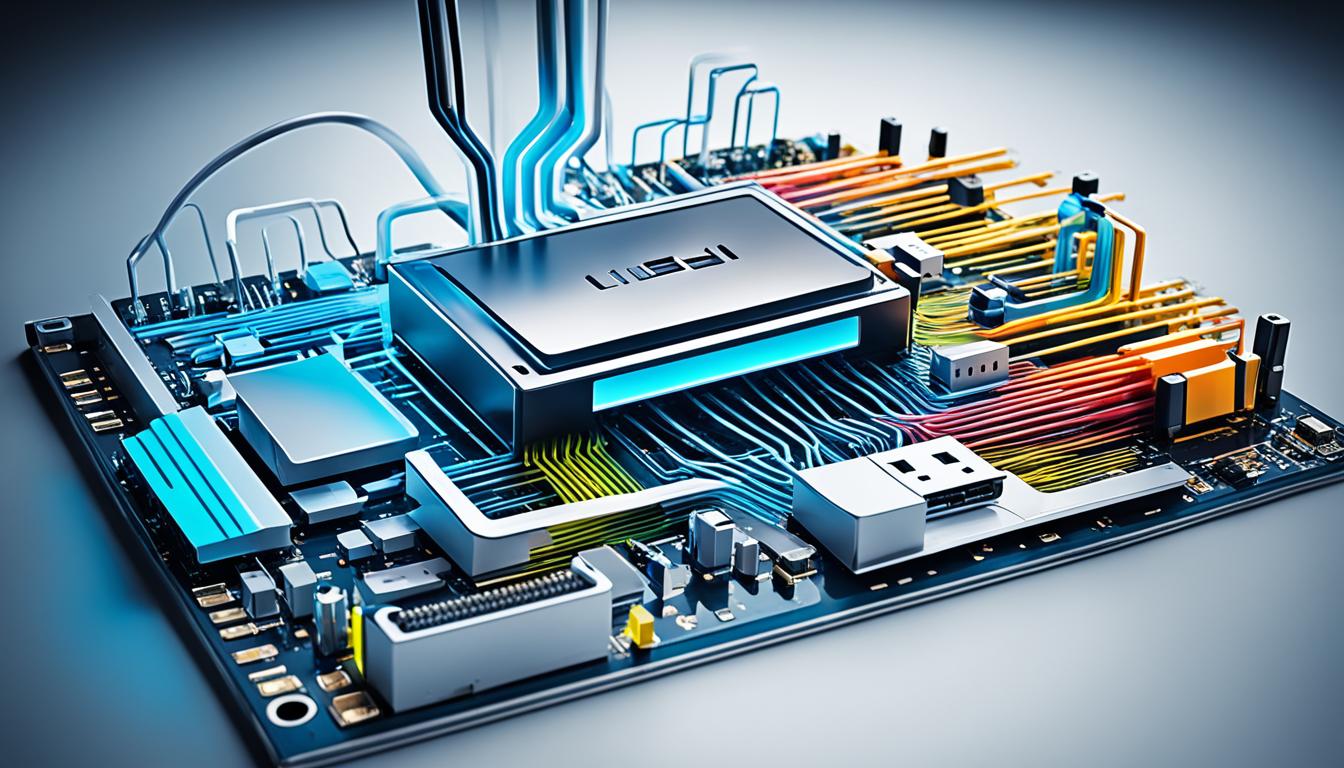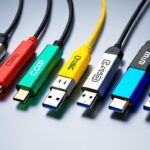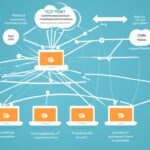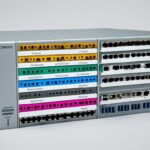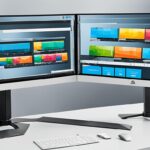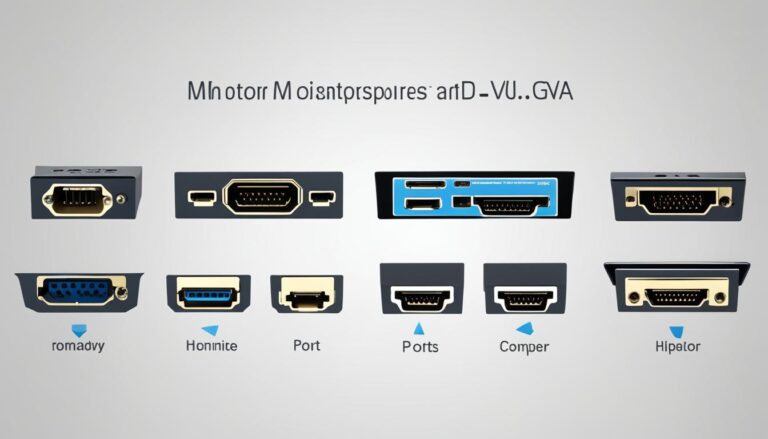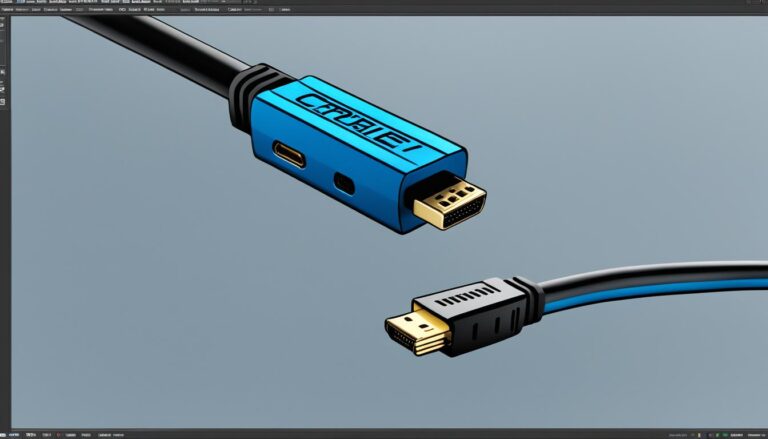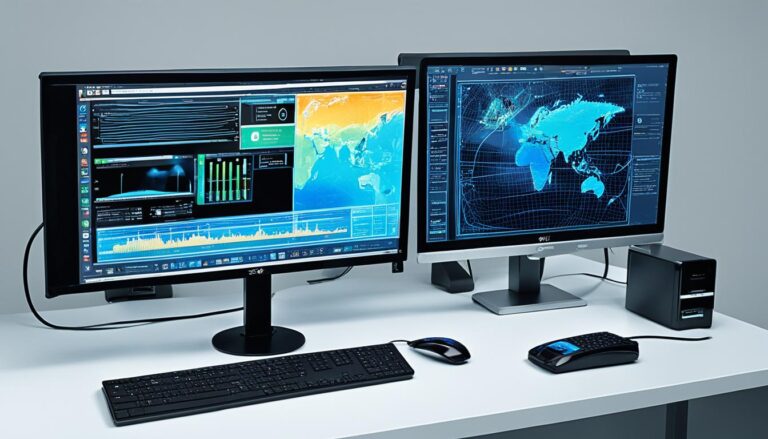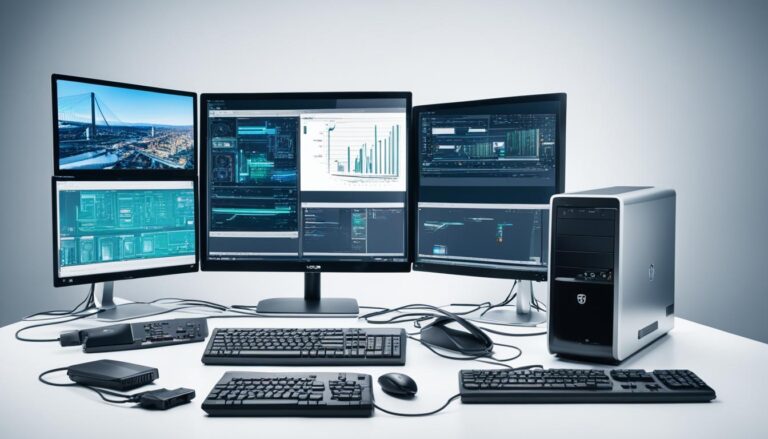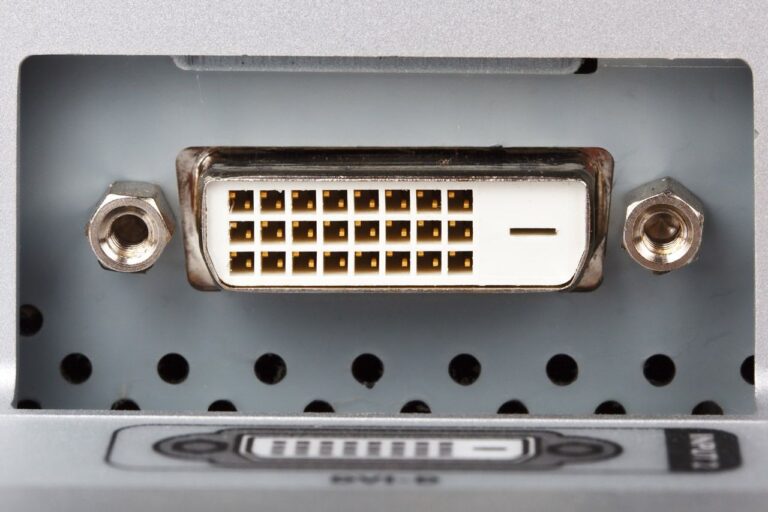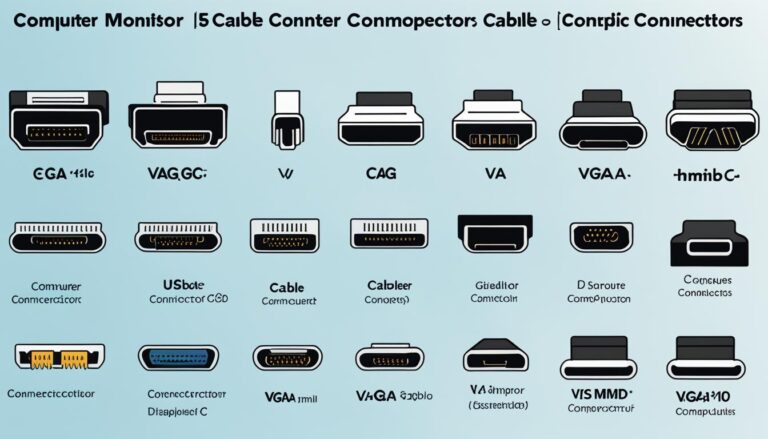USB ports on CPUs connect right to the motherboard. This means data moves faster between the CPU and USB devices. It cuts out extra steps in data transfer.
USB technology is key for computer systems to work well. These ports let devices talk to the CPU directly. This makes things like moving files and connecting devices quick and easy.
The Evolution of USB Technology
USB technology has changed how we connect and share data between gadgets. From the start, USB has made big leaps forward. USB 2.0 and USB 3.0 have been two big steps in its growth.
USB 2.0: Faster Data Transfer Speeds
In April 2000, we saw the launch of USB 2.0, a big upgrade over the earlier USB 1.1. USB 2.0 aimed to speed up data sharing. This was to support the growing use of multimedia and storage.
Being 40 times quicker than USB 1.1, USB 2.0 delivered more bandwidth. This meant data could be moved faster and smoother. It was perfect for large files like high-quality photos or videos.
Backward Compatibility and Adoption of USB 3.0
A great thing about USB 2.0 was how it worked with older USB 1.1 gadgets. You could plug USB 1.1 devices into USB 2.0 ports without problems.
But, as we needed even quicker data sharing, USB 3.0 came along. Known as SuperSpeed USB, 3.0 was a big jump from USB 2.0.
USB 3.0 was ten times quicker than USB 2.0. This allowed even speedier file sharing and better performance. USB 3.0 worked with older USB devices too, making it easy for everyone to upgrade.
The Future of USB
More gadgets now come with USB 3.0 ports. Its quicker data sharing speeds have made it very popular. This is especially true for tasks needing fast uploads or live data streaming.
As we move forward, USB 3.0 may become the main choice, with USB 2.0 being used less.
USB tech is still advancing. Newer versions like USB 3.1 and USB 3.2 offer even quicker data sharing. These improvements make sure USB stays vital for our daily tech needs. This lets us easily connect and share data between gadgets.
We’ll look at different USB ports on computer cases and what they do next.
USB Ports on Computer Cases
Most desktop computer cases come with many USB ports, at the front and back. These ports let you connect devices like keyboards, mice, and cameras. They make using various devices with your computer easy.
The front USB ports are easy to reach for quick use. They’re great for devices you plug in and out often, like USB sticks or phone chargers. You can easily transfer data or charge devices without much fuss.
The back USB ports are meant for devices that stay plugged in longer, like external hard drives. They keep wires hidden and provide a steadier connection. This helps avoid cables being unplugged by accident.
Different computer cases have various numbers of USB ports, depending on the model. They usually adhere to standard USB specs to work with many devices. Cases might have USB 2.0 and USB 3.0 ports, with the latter being faster for data transfer.
Below is an example of a computer case showing where the USB ports are:
| Computer Case | Front USB Ports | Back USB Ports |
|---|---|---|
| Brand X Case | 2 | 4 |
| Brand Y Case | 1 | 6 |
| Brand Z Case | 4 | 2 |
The table shows different brands have different numbers of USB ports. This helps people choose the best case for their needs. It depends on how many devices they want to connect.
In summary, USB ports on computer cases are key for connecting devices. They offer useful ways to plug in devices, whether for short or long periods. With both front and back USB ports, they make using computers better.
Other Ports and Slots on Computer Cases
Computer cases aren’t just about USB ports. They come with many ports and slots. You’ll find audio ports, a power socket, an Ethernet port, a monitor port, and slots for adding more hardware.
Audio Ports
Audio ports on computer cases let you connect things like speakers, microphones, and headsets. This means you can enjoy great sound or chat with friends online. They’re perfect for online meetings, playing games, or making music.
Power Socket
A power socket is key for plugging in your computer. It helps your computer get the power it needs. This lets your computer do its job and handle tasks well.
Ethernet Port
With an Ethernet port, you can hook up to the internet through a cable. It’s fast and stable, making it great for gaming, streaming videos, or downloading big files.
Monitor Port
A monitor port lets you connect your computer to a bigger screen. It offers high-quality video. This is great for design, editing videos, or getting more from games.
Expansion Slots
Expansion slots let you add extra bits to your computer, like graphics or sound cards. This way, you can make your computer better to suit what you need.
“The various ports and slots on computer cases provide users with versatile connectivity options, enabling them to connect audio devices, power their systems, access networks, connect external displays, and expand their hardware capabilities.”
Computer cases help connect all your devices easily. There are lots of different cases out there. They have different ports and slots to fit what different people need. The type you need depends on what you want to do with your computer.
| Port/Slot | Description |
|---|---|
| Audio Ports | Connect speakers, microphones, and headsets for audio input and output. |
| Power Socket | Connect the power cord to supply electricity to the computer. |
| Ethernet Port | Connect to a wired network for internet connectivity. |
| Monitor Port | Connect an external display or monitor for video output. |
| Expansion Slots | Add additional hardware components to enhance system performance. |
Conclusion
USB technology has changed how computers connect and perform. Now, USB improves data transfer speeds, making communication between devices quicker. The built-in USB ports enhance connectivity by connecting directly to the CPU. This minimizes delays and boosts the computer’s performance.
USB ports can be found on both the front and back of a computer. They link up with devices like keyboards, mice, and printers easily. This makes USB ports key to computer connections. They are widely used because they work well with many devices.
USB is set to lead in data transfer and connecting devices as technology advances. With USB 3.0, we’ll see even faster speeds and better performance. USB technology is crucial for everyday computing. It will keep evolving, offering new ways to transfer data and connect devices.
FAQ
What are USB ports on CPUs?
USB ports on CPUs connect straight to the CPU. They are also known as “native” USB ports. This lets them move data quicker and reduces delay when compared to USB ports that connect through the motherboard chipset.
What is USB 2.0?
Released in April 2000, USB 2.0 was a big step up from USB 1.1. It’s much faster, allowing for quick data transfer. This is great for multimedia and storing data. USB 2.0 can work with devices that need either high or low bandwidth.
What devices can be connected to USB ports on computer cases?
USB ports on computer cases let you connect lots of different devices. You can connect keyboards, mice, printers, and cameras. The front USB ports make it easy to plug in devices. The back ports are good for things you don’t disconnect often.
What other ports and slots are found on computer cases?
Computer cases have many types of ports and slots. For sound, there are audio ports. They let you connect speakers and microphones. You’ll find a place for the power cord, and an Ethernet port for the internet. There’s also a port for your monitor. Plus, there are slots for extra hardware like video cards.
What is the role of USB ports in computer connectivity?
USB ports are key for connecting computers and devices. They’ve gotten faster over time. Fast transfers mean better performance. The direct CPU connection through native USB ports cuts delay. USB technology is essential and will keep playing a big role as computers evolve.
